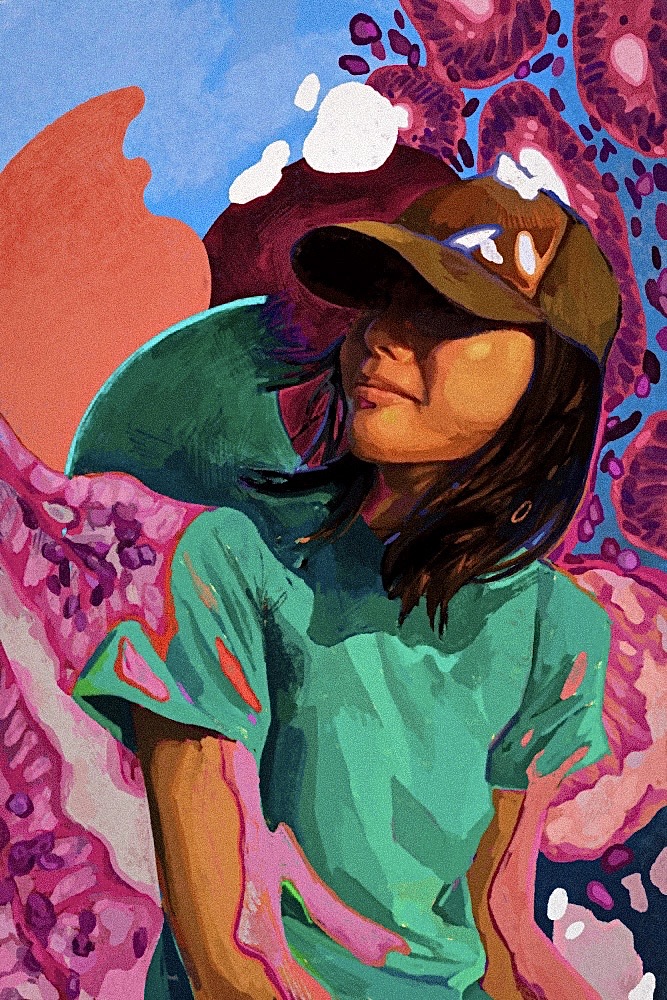
The word “white-washed” gets thrown around a lot when describing Asian girls. Do you tan? Do you have highlights? Do you have — god forbid — a white boyfriend? You must hate your culture! Come up and get a prize and a Lunchable.
When I was little, I lived in Fort Lee, N.J., an Asian bubble. From my friends to my food, everything I came in contact with was Asian. If going to a 90 percent Asian school wasn’t culturally homogenous enough, I went to Chinese school every Sunday. Living there really had me thinking that Asians were the majority in America.
Then, at 9 years old, I moved to Tennessee and became the only Asian kid in my school. As a matter of fact, I was the first Asian person most of my classmates had seen. All of a sudden, I couldn’t just melt into the background anymore. My existence itself stood out. I was torn between trying to fit in and sticking to my roots, because before, sticking to my roots was fitting in.
I first heard the term “white-washed” at age 13, helping my cousins with their English homework. “You’re like a banana! Yellow on the outside, white on the inside.” Okay then, I thought, I hope you guys slip on my peel and die. What does that even mean? I speak my language, I love my food and I love my culture. Does liking English more than math make me less Asian? What does being Asian mean, if not just my race? Yes, after living in the South for a couple of years, I had a balayage. My friends were non-Asian. I certainly love me some barbecue. But I never felt less Asian because of any of that.
Somewhere along the way, being an Asian girl who isn’t a walking stereotype became synonymous with being a traitor. “White-washed” is now a passive-aggressive slap in the face with a clear implication: you’re not Asian enough. The colloquial concept of white-washing is an outdated, close-minded point of view. What does it mean to be Asian? Do you have to have pale skin and dark hair? Ironically enough, those who throw around the word “white-washed” end up doing the most harm to the stereotype by reinforcing the idea that there is only one way to be Asian. If you’re now deciding who is or isn’t “Asian enough,” then congratulations! You are now the colonizer. Nice job, General MacArthur.
If anything, mainland East Asian beauty standards are white-washed: the result of a history of colonizing. Pale skin has always been a beauty standard in East Asia because it implies that you are indoors and thus do not have to work, which indicates a higher social status. However, Western imperialism has put an even greater emphasis on pale skin, and other eurocentric standards. After colonization, white features became symbols of modernity, civilization and beauty. Eurocentric features such as big eyes, sharp noses and double eyelids have been idolized for decades now, in addition to pale skin.
Every couple of years, my family and I go to China to visit our relatives. As someone who loves being outdoors and sunbathing, I will inevitably have a decent tan. The bulk of this tanning happened in ninth grade when I joined the tennis team and spent the majority of my time outside on the courts. The first thing that my relatives commented on when I visited in 2021— after saying how much they missed me, of course — is that my skin had gotten so tan. “You looked like a country bumpkin!” and “I know this really good skin-whitening cream, let me give you some.”
Just like the term “white-washed,” I knew that this was meant in a negative context. Yet for some strange reason, I didn’t feel angry or hurt by these comments. To me, it was merely another statement of an observation: I know I look white-washed and I know I have tan skin, just the same way that I know that the sky is blue. Maybe because I understood both cultures and their beauty standards, or maybe because I just couldn’t care less.
Visiting China that year made me realize that it doesn’t matter what shade my skin is, what color my hair is or what my favorite subject is. I personally don’t feel white-washed because I have such a strong sense of connection to my heritage, but I don’t feel hurt by being called white-washed, either. I’ve grown up close to my culture, and that foundation has always helped me explore spaces where Western influences dominate without losing my identity. I’ll have pizza for lunch and tomato-egg-rice for dinner. I’ll wear a jade bangle along with my enewton. I don’t need to sell my Asian heritage to be “normal,” but I also don’t have to show up in a qipao to remain culturally grounded.
Everyone is bound to absorb their environment and integrate. That doesn’t mean that they’re losing who they are. They’re only responding to their surroundings to better survive, connect and thrive. For many Asian girls growing up in America, adapting isn’t about rejection of their own identities; it’s simply a result of growing up in a certain place. Talking a certain way and liking certain things isn’t betraying your ancestors. Call it a survival mechanism to fit in and feel safe, or call it a natural acculturation. If you grow up in America, you’re bound to be at least a little bit different from those in the mainland, and that’s no one’s fault. There’s no reason to feel guilty because you don’t fit into someone else’s definition of Asian-ness.
Being here at Yale especially has shown me, and should show others, that Asian is not a monolith. Yes, there are mainland international students who, at a glance, look like they defy everything that I’ve talked about in this article. But even they have certain nuances and traits that don’t fit cleanly in these pseudo-imperialist boxes. Labeling people as “white-washed” erases the complexity of growing up between cultures. Cultural identity isn’t static: it bends, grows and evolves. My identity doesn’t end in black-and-white — or yellow. So stop throwing around the word “whitewashed” like a slur and go enjoy your Panda Express.







